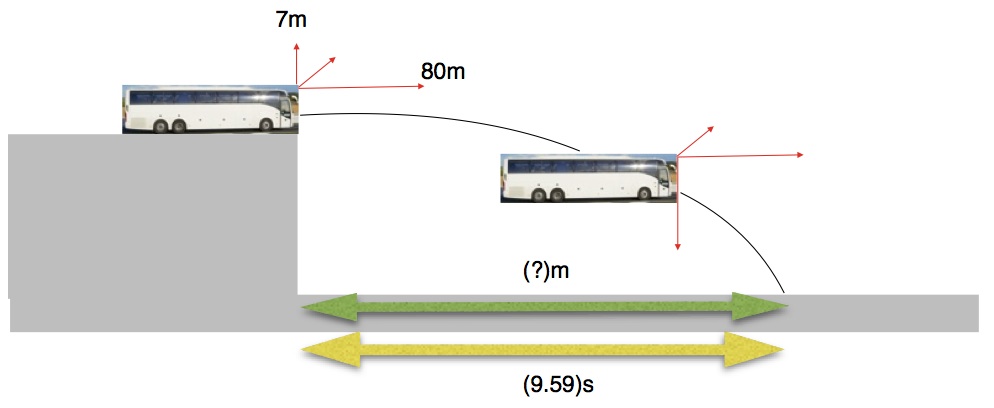This is an old revision of the document!
Example: Finding the range of a projectile
For the previous example of the out of control bus which is forced to jump from a location $\langle 0,40,-5 \rangle$ with an initial velocity of $\langle 80,7,-5 \rangle$. We have now found the time of flight to be 9.59s and now want to find where the bus returns to the ground?
Facts
* Starting position of the bus $\langle 0,40,-5 \rangle$
* Initial velocity of the bus $\langle 80,7,-5 \rangle$
* The acceleration due to gravity is 9.8 $\dfrac{m}{s^2}$ and is directed downward.
* The bus experiences one force - the gravitational force (directly down).
* The bus takes 9.59s to reach the ground
Lacking
* The final position of the bus.
Approximations & Assumptions
* Assume no drag effects
* Assume ground is when position of bus is 0 in the y direction
Representations
Diagram of situation.
Diagram of forces acting on bus once it leaves the road.
Equation for calculating the final position of an object.
$$ x_f = x_i + V_{avg,x} \Delta{t}$$
Solution
From the previous problem you already know the final location of the ball in the y direction to be 0 as it has met the ground after 9.59s.
Now to find the range in the x and z directions:
$$ x_f = x_i + V_{avg,x} \Delta{t}$$
$$ = 0 + 80m/s(9.59s)$$
$$ = 767m$$
$$ z_f = z_i + V_{avg,z} \Delta{t}$$
$$ = -5 + -5m/s(9.59s)$$
$$ = -52.95$$
Final position = $\langle 767,0,-52.95 \rangle$ m

